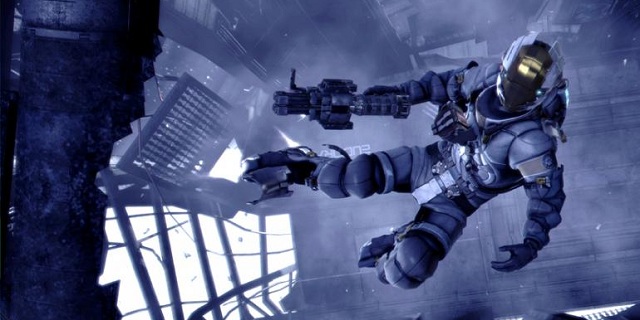
The original Dead Space came out of nowhere and surprised almost everyone with its careful blend of third-person shooter gameplay and atmospheric horror. After a fantastic sequel and some interesting spin-offs, Visceral Games returns with Dead Space 3, the supposed last game in a trilogy. This time there’s a greater focus on expanding the formula from the original two games, with more open environments, a weapon crafting system and a healthy dose of side content, giving us the biggest Dead Space experience to date. Unfortunately, bigger isn’t always better.
After the events of Dead Space 2, Isaac Clarke, the series’ protagonist, finds himself dragged back in the middle of another conflict featuring the Unitologists, a religious organization out to kill Clarke, and the return of the Necromorph threat. Hoping to stop the alien creatures once and for all, Isaac and a group of other soldiers and scientists travel to a distant planet that could hold the key to doing so. The previous two games following a fairly basic story that seemed focused on the Necromorphs and the artifacts (known as markers) that created them, only rarely dabbling in the Unitology religion that surrounds it. That changes with Dead Space 3.
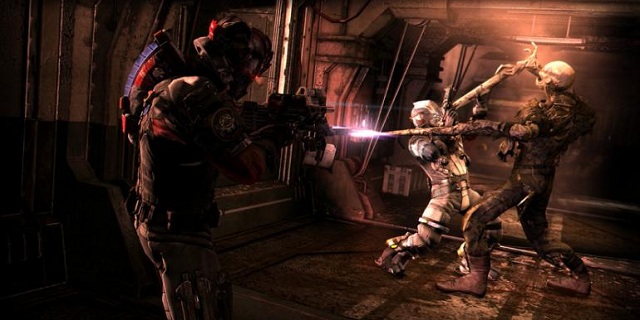
The story involves a large cast of characters as well as a central villain, both of which feel unnecessary in the grand scheme of things. Isaac’s story, one that once hinged on the lone survivor mentality, feels antiquated as a result. The plot heads in some very predictable directions and never really finds its groove, even once things begin to head towards the ultimate conclusion. In the end, it’s a story that feels underdeveloped in its attempt to tie a nice little bow around the fiction that the first two games established.
The journey begins in a small cluster of abandoned ships around the ice planet, Tau Volantis. Before you can head there, you travel to these ships where you are familiarized with the game’s many mechanics, both new and old. The core gameplay is as fun as ever, with the always-entertaining and strategic dismemberment system making a return. You will begin to encounter new kinds of enemies, each forcing you to change your strategies and weapon choices, but ultimately proving that the mechanics that are at the heart of the Dead Space franchise are as compelling as ever.
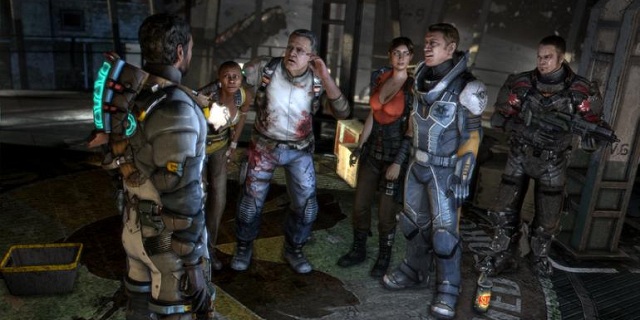
Terror for two
New to the franchise is co-op campaign, giving you a chance to play through the entirety of Dead Space 3 with a buddy. It’s nothing remarkable, but the game lends itself well to the idea of a second person helping you out, especially during some of the tougher enemy encounters. It’s a well-implemented mode that doesn’t feel as out of place as some may have thought.
As you travel around these ships, you see the series at its best. You see the close-quarters encounters with enemies, the suspenseful moments as you turn that next corner unsure of what could be waiting for you and the visually stunning environments that seem even more impressive than the previous two games. Not only that, but the zero gravity sequences, where you find yourself flying around in space, are back and are bigger than ever. There are plenty of opportunities to hop out of the current ship you’re in, fly around collecting items and other materials, and then take a small shuttle to another ship. These are easily the most impressive sections of the game, and they demonstrate the high quality visuals and sound design that the series is well-known for.
In addition to being given more freedom to explore, you are also assigned optional missions that you can complete for new rewards and some interesting back story on certain events in the Dead Space universe. These missions start out strong, but as the game progresses, they begin to lose their luster and become tedious affairs. I found myself excited to complete every one that pops up, but eventually their boring objectives and rote enemy encounters began to trump my enjoyment. It’s easy to see why this became the case, but it’s disappointing that what could have been one of the most engaging elements introduced only leads to unsatisfying results in the end.
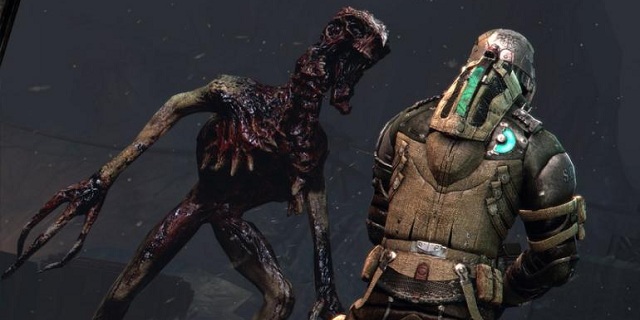
Also new to the series is weapon crafting, which allows you to customize weapons you already have or create new ones from scratch. Gone is the large and creative arsenal from the first two games, which seemed like a misstep at first, but once you begin to find new materials and blueprints, you’ll be able to craft weapons that rival and even exceed those. Not only does each weapon now have a sub-weapon attached, but you can mix and match the attachments at will, allowing you to come up with a large array of different mixtures each providing their own tactical advantage. You can spend hours trying out new combinations of weapons, and the more time you spend with this system, the more fun it becomes.
After you are introduced to the game’s new elements, some better than others, it can be easy to claim that Dead Space 3 is another winner in a franchise that has yet to disappoint. Once you reach the ice planet, however, you begin to see the game quickly run out of steam. The introduction to the ice planet and the first couple of chapters after that are exciting, building up to something that could be as impressive as the first half of the game was. It never quite meets those expectations though, leaving you with an uneven experience that feels ripped straight out of a completely different game.
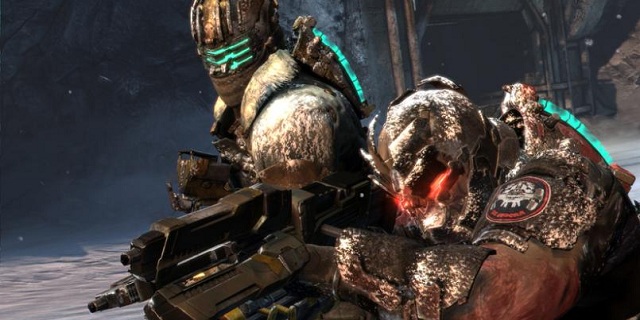
Not only does it feel less open than the first half did, but the content that surrounds this seemingly intriguing planet is drab and full of unnecessary padding. I mentioned the side missions becoming tedious; this is where it happens, along with the rest of the game. Enemy encounters begin to feel less creative, environments are recycled ad nauseum and you are thrown against annoying boss fights that never live up to their potential. There are scattered moments of genius throughout these drawn-out segments, but they are too few and far between to make any sort of impact on an experience that feels completely out of left field.
This is also where the human enemies begin to show up in droves. You will spend the majority of your time fighting against Necromorphs, but there are a good number of segments that involve human encounters that do not fit in with the rest of the experience at all. The flow of combat is a perfect fit for your typical enemies, but when facing human opponents that fire back at you, take cover, and attempt to flank you, the action feels stilted and it suddenly becomes an entirely different game. Dead Space’s combat was never designed for these encounters and it shows; is it the complete antithesis of what makes the series so enjoyable.
The disconnect between the first and second halves of Dead Space 3 is one of the strangest things I have ever seen in a game. The beginning is impressive, full of promise and demonstrates the Dead Space experience at its very best. The second half dives headfirst into a boring, unremarkable slog that is not befitting of Dead Space name. You’re left with a lopsided game that tries some new and exciting things, but only succeeds half of the time. It’s far from a bad experience, but it’s one that will leave you scratching your head, wondering where it all went wrong.
Pros: Excellent visuals and sound design, brilliant weapon crafting system
Cons: Boring side missions, poorly-written story, second half is full of boring padding



















